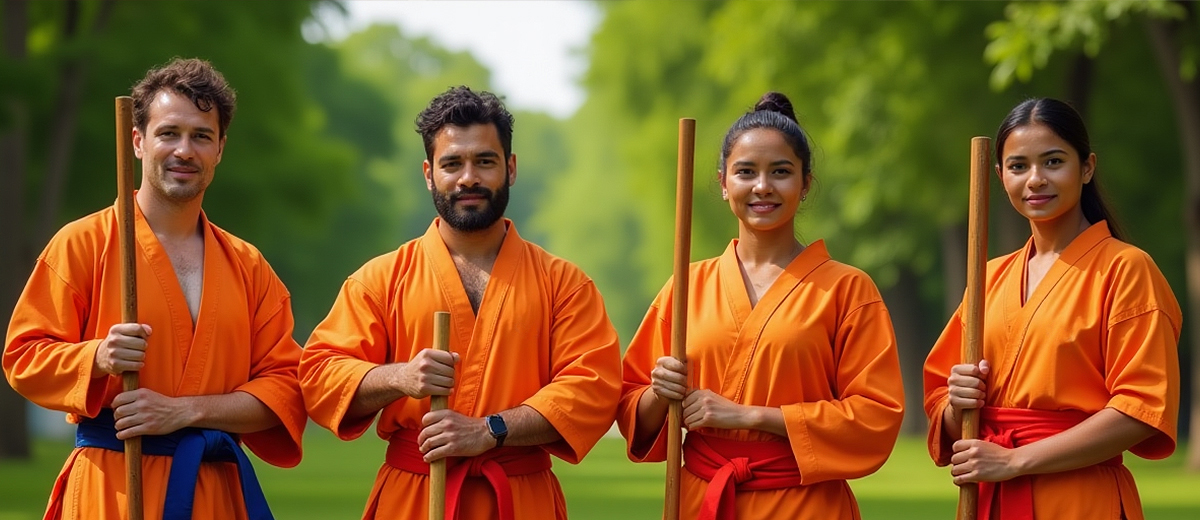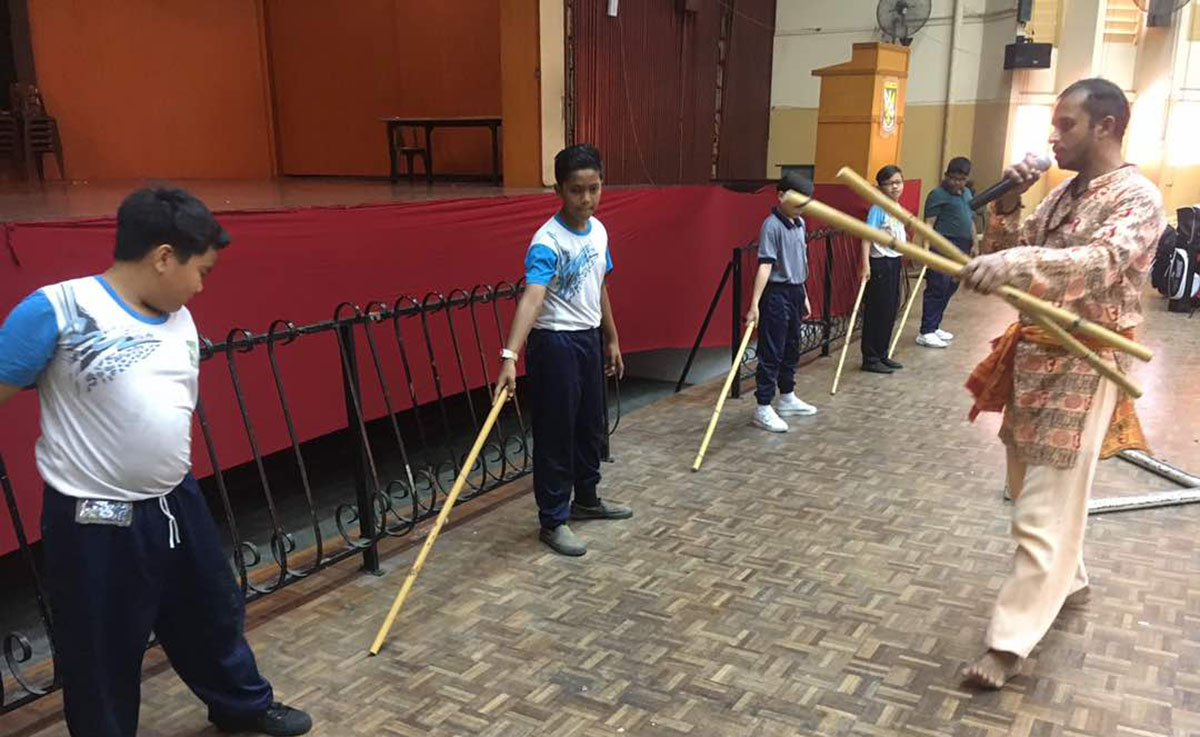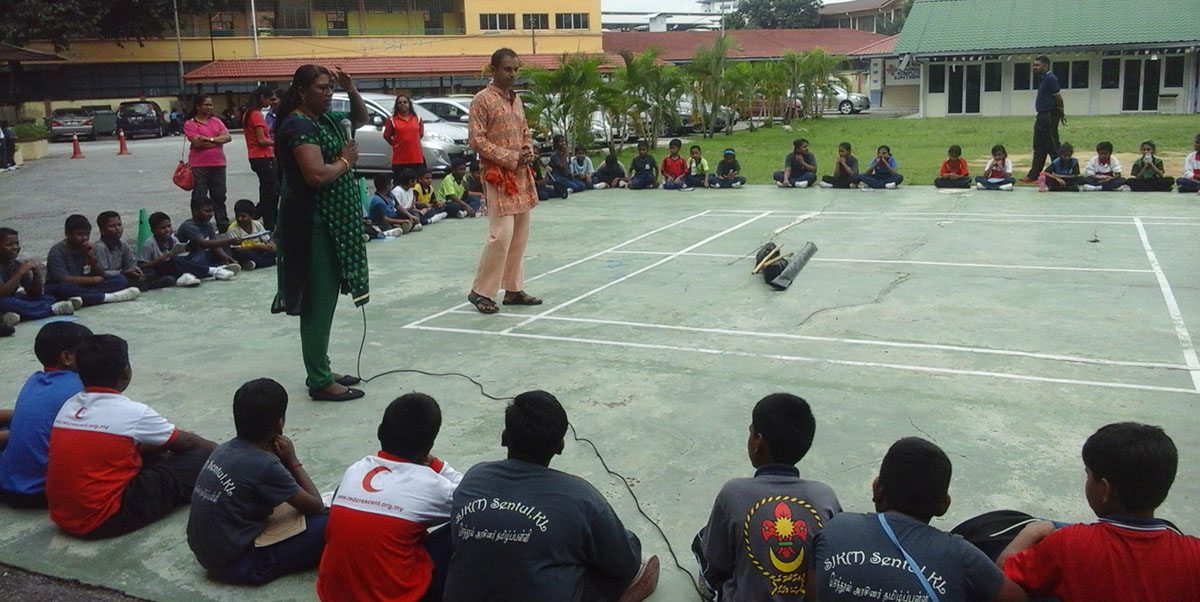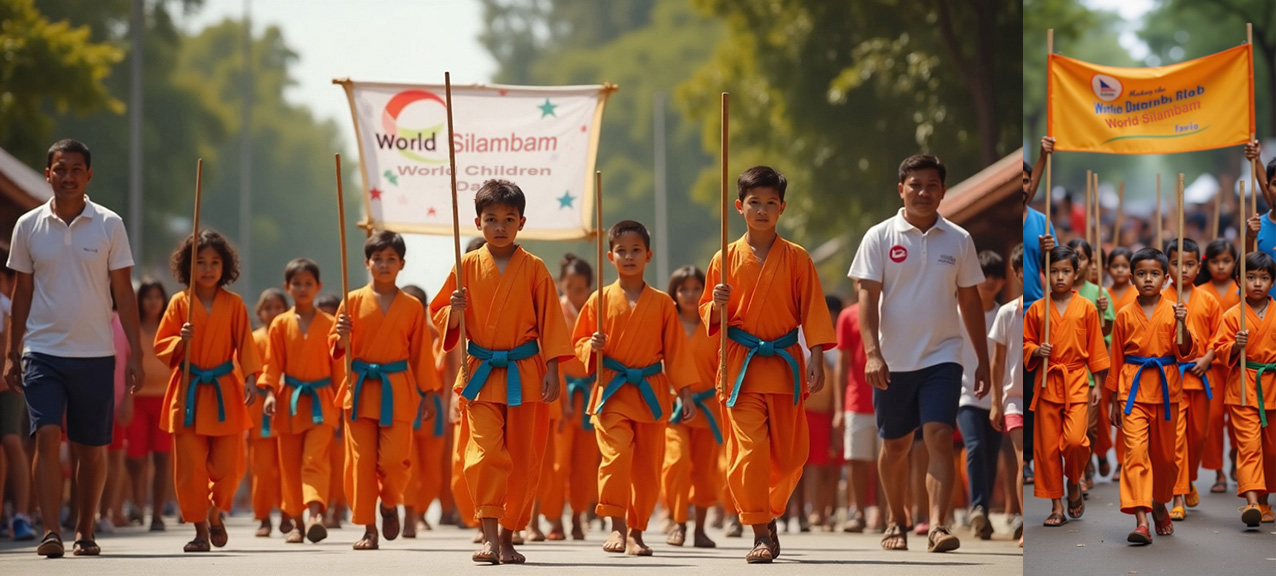Silambam Arts Education
Murugan Disguises as an Old Man to Teach Sage Agastya
The Sage’s Longing for Knowledge
In the sacred Pothigai Hills, where the dense forests whispered ancient secrets and the rivers carried the songs of the sages, the revered Sage Agastya sat in deep meditation. He was one of the greatest rishis, known for his immense wisdom, spiritual power, and contributions to the world.
However, despite his mastery over the Vedas, scriptures, and divine sciences, he felt that his knowledge was incomplete. He had heard about Silambam, the celestial martial art, said to be taught by Lord Murugan himself. It was an art form that blended strength, agility, and strategy, and was not just a form of combat but a path to enlightenment.
Agastya knew that Silambam was the key to balancing the mind and body, and it could be used to protect dharma. But mastering it was no easy task. So, with deep devotion, he sat in meditation and prayed to Lord Murugan, the Divine Warrior of the Gods, the one who had defeated mighty demons and upheld righteousness.
"O Muruga, the Master of Vel, the teacher of the divine arts, bless me with the knowledge of Silambam. Let me learn this sacred skill so I may pass it on to the worthy and preserve dharma on this earth."
Days turned into weeks, and weeks into months. Yet, the Lord did not appear. But Agastya did not lose hope. He continued his prayers with unwavering faith, knowing that the divine will reveal itself in its own time.
Scriptural Reference:
The Skanda Purana, one of the largest Mahapuranas,
describes Murugan as a great teacher and warrior. It is said:
"Jñānānanda mayam devam nirmala sphatikākṛtim
Ādhāraṁ sarva vidyānām hayagrīvam upāsmahe" (Skanda Purana)
"We meditate upon the deity of knowledge and bliss, pure as crystal, the source of all wisdom."
The Arrival of the Mysterious Old Man
One evening, as the golden sun set behind the hills, a soft tapping sound echoed through the forest. The sound was steady, rhythmic, almost as if someone was dancing with the wind. Agastya opened his eyes and turned toward the sound.
Before him stood an old, frail man, his body slightly bent with age, leaning on a long bamboo staff. His beard was white as snow, his eyes twinkling with hidden wisdom. His clothes were simple, yet his presence carried an air of mystery.
Agastya, ever respectful, greeted him with folded hands.
"O revered elder, welcome to my humble abode. You appear to have traveled far. Please, rest and accept my hospitality."
The old man chuckled, tapping his staff on the ground.
"I have not come for rest, O great sage. I have heard that you wish to learn the art of Silambam. But tell me, do you believe that an old, feeble man like me can be your teacher?"
Agastya was taken aback. He had expected a celestial warrior, perhaps even Lord Murugan himself, to descend from the heavens. Instead, here stood an old man, barely able to stand without his staff.
For a moment, doubt crept into his mind. Could this man truly teach him the art of combat?
But Agastya was a wise sage. He knew that knowledge could come from the most unexpected sources. He bowed deeply and said,
"O Master, wisdom is not bound by age or appearance. If you can teach, I am ready to learn."
The old man smiled knowingly and nodded.
"Then let us begin."
Scriptural Reference:
"Vidya dadati vinayam
Vinaya dadati patratam"
— (Hitopadesha 1.4)
"Knowledge imparts humility; humility makes one worthy."
The Training Begins
The next morning, Agastya followed the old man to an open clearing. The forest around them was still, as if it too was waiting to witness something extraordinary.
"Pick up a staff," the old man commanded.
Agastya picked up a bamboo staff, gripping it tightly, prepared to strike. But before he could react, the old man moved with blinding speed!
The frail-looking elder, who had barely been able to walk the day before, spun his staff effortlessly, his movements fluid like the flowing river, his strikes as sharp as lightning. The air around them vibrated as the staff cut through it with precision.
Agastya could barely follow his movements.
"Silambam is not about brute strength," the old man said, his staff moving like an extension of his own body. "It is about rhythm, balance, and intelligence. A true warrior does not strike blindly. He moves with awareness, knowing when to attack and when to defend."
The training was relentless.
Each time Agastya made a mistake, he received a sharp tap on the wrists or legs. If his stance was wrong, the staff struck his knees, forcing him to correct his position. If his reaction was slow, the old man’s staff would knock him down.
His arms ached, his legs trembled, but he refused to give up. Day after day, he trained.
At first, he tried to use his strength, but the old man effortlessly countered his attacks. He realized that Silambam was not about overpowering an opponent but about using their energy against them.
Weeks passed, and Agastya began to move with the rhythm of the wind, understanding the deeper philosophy behind the art. He was no longer just a sage; he was becoming a warrior.
Scriptural Reference:
In the Bhagavad Gita, Lord Krishna speaks about perseverance in knowledge and discipline:
"Abhyāsenatu Kaunteya vairāgyeṇa cha gṛihyate"
— (Bhagavad Gita 6.35)
"Through constant practice and detachment, one can achieve mastery."
The Moment of Truth
One evening, after a particularly intense session, Agastya fell to his knees, exhausted. He looked up at the old man, who had not even broken a sweat.
"O Master," he said breathlessly, "your strength is beyond that of mere mortals. Who are you really?"
The old man smiled.
"Do you still not recognize me, O wise sage?"
Suddenly, the sky shook with thunder, and a brilliant light engulfed the old man. His frail form disappeared, and in his place stood Lord Murugan, glowing with divine radiance, holding his Vel (spear), his youthful face filled with celestial wisdom. His mighty peacock vahana stood beside him, its feathers shimmering in divine hues.
Agastya was overwhelmed. He immediately prostrated before the Lord.
"O Murugan! Forgive me for not recognizing you!"
Murugan smiled and placed his hand on Agastya’s head.
"Agastya, the true test of a student is humility. You did not judge by appearances, nor did you let pride stop you from learning. Because of this, I bless you with the complete mastery of Silambam. Use it not just as a weapon, but as a path to wisdom, righteousness, and protection of dharma."
With that, Murugan imparted the final secrets of Silambam—the advanced techniques, the power of focus, and the deeper philosophy behind each movement.
Agastya, now enlightened, bowed deeply.
"I shall honor this gift, my Lord, and spread its wisdom to the world."
Scriptural Reference:
The Thirumurugatruppadai, an ancient Tamil scripture dedicated to Murugan, describes how He blesses His devotees:
"Arivudaiyor ariyatha arivu thannai
Therivithu thandhidum deivam peridhu"
— (Thirumurugatruppadai, Verse 1)
"He who grants divine knowledge that even the wise fail to attain."
The Legacy of Silambam
With Murugan’s blessings, Sage Agastya became one of the greatest masters of Silambam. He passed on his knowledge to kings, warriors, and sages, ensuring that the art would never be forgotten.
Even today, Silambam is practiced across the world, a testament to the divine wisdom passed down by Lord Murugan himself.
Moral of the Story
- Wisdom and strength are not always where you expect them to be.
- True learning requires humility, patience, and dedication.
- Silambam is more than just combat—it is a path to enlightenment and righteousness.















